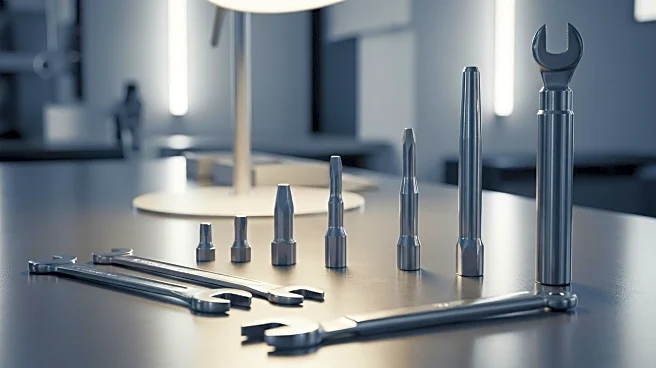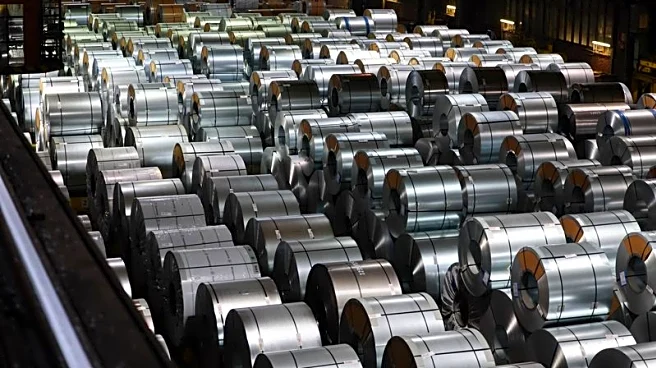What's Happening?
The European Commission is advocating for the United States to eliminate tariffs on steel and metal products as part of an EU-U.S. tariff agreement. EU Trade Commissioner Maros Sefcovic announced the proposal, which aims to replace 50% U.S. tariffs with tariff-free or low-tariff quotas. The proposal seeks to protect markets from overcapacity and includes increasing EU tariffs on steel to 50% while reducing quotas. The initiative requires approval from EU governments and the European Parliament and aligns with U.S. efforts to safeguard its domestic steel industry.
Why It's Important?
The removal of tariffs could significantly impact the steel and metal industries, fostering trade and economic growth between the EU and the U.S. By addressing overcapacity and derivative products, the proposal aims to streamline trade relations and reduce costs for manufacturers and consumers. This move could enhance competitiveness and collaboration in the global market, benefiting industries reliant on steel and metal products.
What's Next?
The proposal awaits approval from EU authorities, and discussions with U.S. counterparts are expected to continue. If successful, the agreement could lead to a more balanced trade environment and potentially influence other sectors affected by tariffs. Stakeholders in the steel and metal industries will likely monitor developments closely, anticipating changes in trade dynamics and market opportunities.
Beyond the Headlines
The proposal reflects broader geopolitical and economic considerations, as the EU and U.S. navigate complex trade relationships. The focus on derivative products highlights the intricate nature of modern trade agreements and the need for comprehensive solutions to address industry challenges. Long-term implications could include shifts in manufacturing practices and supply chain strategies.












